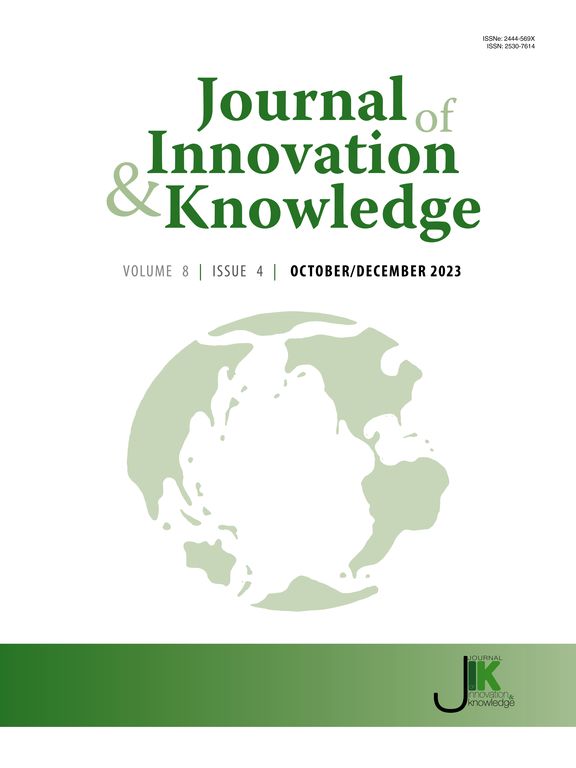信息通信技术发展对中国碳排放的影响
IF 15.5
1区 管理学
Q1 BUSINESS
引用次数: 0
摘要
近年来,信息通信技术(ICT)的发展及其与碳排放的关系已成为一个重要的研究热点。本文利用2010-2022年中国30个省市的数据,采用空间Durbin模型对ICT对碳排放的影响机制进行了实证研究。六个相关的结果出现了。1) ICT的发展增加了当地的碳排放,减少了周围的碳排放,但减少了总体碳排放。2)信息通信技术发展可以通过促进产业结构升级和技术创新,间接减少当地碳排放。3)技术创新具有显著的溢出效应,其中ICT发展降低了技术创新产生的周边地区碳排放,但产业结构优化的空间溢出效应不显著。4)异质性检验表明,东西部地区ICT发展增加了当地碳排放,降低了周边地区碳排放,降低了总碳排放。此外,西部地区的碳减排效果优于东部地区,东北地区ICT发展降低了当地及周边地区的碳排放,中部地区ICT发展对当地及周边地区的碳排放没有显著影响。此外,信息通信技术的碳减排效果在信息通信技术密集地区更好。5)分段回归分析表明,2010-2016年ICT发展对碳排放的抑制作用大于2016-2022年。6)比较分析了ICT制造业和服务业对碳排放的影响、不同行业生产过程中ICT投入对碳排放的影响以及能源结构对ICT发展对碳排放影响的调节作用。最后,提出了针对性的政策建议和未来的研究方向。本文章由计算机程序翻译,如有差异,请以英文原文为准。
Impact of information and communication technology development on China’s carbon emissions
In recent years information and communication technology (ICT) development and its relationship with carbon emissions has become a significant research focus. Using data from 30 Chinese provinces and cities covering 2010–2022, we conduct an empirical study on the impact mechanism of ICT on carbon emissions employing a spatial Durbin model. Six relevant results emerge. 1) ICT development increases local carbon emissions and reduces surrounding carbon emissions but reduces overall carbon emissions. 2) ICT development can indirectly reduce local carbon emissions by promoting industrial structure upgrading and technological innovation. 3) Technological innovation has significant spillover effects, wherein ICT development reduces carbon emissions in surrounding areas, which is generated by technological innovation, but the spatial spillover effect of industrial structure optimisation is insignificant. 4) Heterogeneity tests reveal that ICT development in western and eastern regions increases local carbon emissions, reduces carbon emissions in surrounding areas and reduces total carbon emissions. Furthermore, the carbon emissions reduction effect in the western region is better than that in the eastern region, ICT development in the northeast region reduces carbon emissions in local and surrounding areas and ICT development in the central region has no significant impact on local and surrounding carbon emissions. In addition, the carbon emissions reduction effect of ICT is better in ICT-intensive areas. 5) Segmented regression reveals that the inhibitory effect of ICT development on carbon emissions during the 2010–2016 period was greater than that during the 2016–2022 period. 6) We also compare and analyse the impact of ICT manufacturing and service sectors on carbon emissions, the impact of ICT input on carbon emissions in the production process of different industries and the moderating effect of energy structure on the impact of ICT development on carbon emissions. Finally, we present targeted policy recommendations and propose future research directions.
求助全文
通过发布文献求助,成功后即可免费获取论文全文。
去求助
来源期刊

Journal of Innovation & Knowledge
Multiple-
CiteScore
16.10
自引率
12.70%
发文量
118
审稿时长
37 days
期刊介绍:
The Journal of Innovation and Knowledge (JIK) explores how innovation drives knowledge creation and vice versa, emphasizing that not all innovation leads to knowledge, but enduring innovation across diverse fields fosters theory and knowledge. JIK invites papers on innovations enhancing or generating knowledge, covering innovation processes, structures, outcomes, and behaviors at various levels. Articles in JIK examine knowledge-related changes promoting innovation for societal best practices.
JIK serves as a platform for high-quality studies undergoing double-blind peer review, ensuring global dissemination to scholars, practitioners, and policymakers who recognize innovation and knowledge as economic drivers. It publishes theoretical articles, empirical studies, case studies, reviews, and other content, addressing current trends and emerging topics in innovation and knowledge. The journal welcomes suggestions for special issues and encourages articles to showcase contextual differences and lessons for a broad audience.
In essence, JIK is an interdisciplinary journal dedicated to advancing theoretical and practical innovations and knowledge across multiple fields, including Economics, Business and Management, Engineering, Science, and Education.
 求助内容:
求助内容: 应助结果提醒方式:
应助结果提醒方式:


